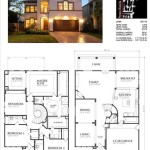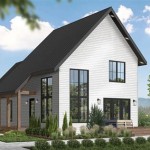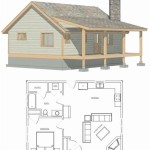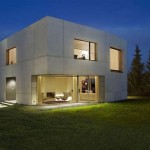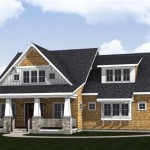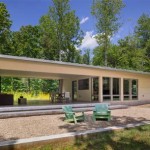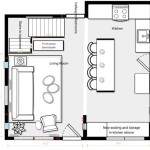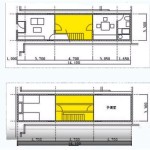Contemporary Inverted House Plans: A Modern Architectural Marvel
Contemporary inverted house plans are a captivating trend in modern architecture, challenging conventional notions of residential design. These structures, characterized by having their primary living spaces (such as the living room, dining area, and kitchen) located on the upper floors and bedrooms on the lower floors, offer a unique array of advantages and design considerations. This article explores the concept of inverted house plans, examining their benefits, design principles, and functional applications within contemporary architecture.
Traditional home designs typically prioritize ground-level access to living spaces, making them easily accessible from the street or garden. However, inverted house plans intentionally disrupt this convention, prioritizing views, natural light, and privacy on the upper levels. This design shift requires careful planning and a deep understanding of structural engineering, site conditions, and the homeowners' lifestyle needs.
Maximizing Views and Natural Light
One of the primary motivations behind choosing an inverted house plan is the desire to maximize views and natural light. By placing the living spaces on the upper floors, residents can enjoy panoramic vistas that may be obstructed from ground level. This strategy is particularly effective in properties with scenic surroundings, such as coastal landscapes, mountainside locations, or urban environments with significant skylines. Elevating the living spaces also allows for increased sunlight penetration, reducing the need for artificial lighting and creating a brighter, more cheerful atmosphere.
The strategic placement of windows and skylights is crucial in maximizing the benefits of an inverted layout. Large windows and expansive glass doors can flood the upper floors with natural light, while skylights can brighten interior spaces that are far from exterior walls. Thoughtful window placement can also frame specific views, creating focal points within the living spaces and enhancing the overall aesthetic appeal of the home.
Furthermore, the orientation of the house relative to the sun's path is an important consideration. Architects must carefully analyze the sun's trajectory throughout the year to optimize solar gain in the winter and minimize overheating in the summer. Overhangs, awnings, and strategically placed trees can provide shading during peak sunlight hours, reducing energy consumption and enhancing thermal comfort.
The benefits of leveraging views and natural light extend beyond aesthetic considerations. Exposure to natural light has been linked to improved mood, increased productivity, and better overall health. By maximizing natural light exposure, inverted house plans can contribute to a healthier and more enjoyable living environment.
Enhanced Privacy and Security
Inverted house plans can also provide enhanced privacy and security for homeowners. By placing the bedrooms on the lower floors, they are further removed from street-level noise and activity. This can create a more peaceful and restful sleeping environment, particularly in urban areas or busy neighborhoods. The higher placement of living spaces also reduces the risk of unwanted intrusions, as access to these areas is more challenging for potential burglars.
The design of the entrance and access points is critical in maintaining security in an inverted house plan. A secure and well-lit entryway can deter potential intruders, while strategically placed security cameras and alarm systems can provide an added layer of protection. The use of privacy screens, landscaping, and strategically placed windows can also help to shield the lower floors from prying eyes.
The layout of the lower floor can further enhance privacy. Bedrooms can be clustered together in a private wing, separated from other areas of the house. This can create a sense of seclusion and tranquility, allowing residents to relax and unwind in peace. The inclusion of features such as soundproofing materials and blackout curtains can further enhance the privacy and comfort of the bedrooms.
Additionally, the elevated living spaces offer a natural buffer from street-level noise and pollution. This can be particularly beneficial for individuals who are sensitive to noise or who live in areas with high levels of air pollution. The increased distance from the street can create a quieter and more serene living environment.
Addressing Site-Specific Challenges and Opportunities
Inverted house plans are often employed to address specific site-related challenges or to capitalize on unique topographical features. Sloping lots, for example, can be ideally suited for inverted designs, as the upper floors can be cantilevered over the landscape, providing unobstructed views and creating a dramatic architectural statement. In areas prone to flooding, raising the living spaces above the flood line can protect them from water damage.
When building on a sloping site, the lower floors can be partially or fully embedded in the ground, creating a natural barrier against the elements. This can help to regulate the temperature of the lower floors, reducing energy consumption and creating a more comfortable living environment. The earth can also provide structural support, reducing the need for extensive foundations.
In coastal areas, inverted house plans can offer protection from storm surges and high winds. By elevating the living spaces, they are less vulnerable to damage from waves and debris. The design can also incorporate features such as hurricane-resistant windows and reinforced structural elements to withstand extreme weather conditions.
The design of the circulation system is crucial in inverted house plans, particularly when dealing with sloping sites. Stairs and elevators must be carefully integrated into the design to provide easy and convenient access to all levels of the house. The placement of entry points and parking areas must also be carefully considered to ensure that they are easily accessible and well-integrated into the overall design.
In addition to addressing practical challenges, inverted house plans can also be used to capitalize on unique site opportunities. For example, a house built on a hillside might be designed to maximize the views of the surrounding landscape. Or, a house built near a body of water might be designed to take advantage of prevailing breezes and natural cooling effects.
Contemporary inverted house plans represent a departure from conventional architectural norms, offering a unique and innovative approach to residential design. By prioritizing views, natural light, and privacy on the upper floors, these structures create a more enjoyable and functional living environment. The successful implementation of an inverted house plan requires careful planning, a deep understanding of structural engineering, and a keen awareness of site-specific conditions and opportunities.
Furthermore, the choice of materials and finishes plays a crucial role in the overall success of an inverted house design. Lightweight materials, such as steel framing and composite cladding, can be used to minimize the weight on the upper floors and reduce the load on the foundations. Energy-efficient windows and insulation can help to reduce energy consumption and create a more sustainable living environment. The design should consider integrating sustainable technologies such as solar panels, rainwater harvesting systems, and geothermal heating and cooling systems to further enhance the environmental performance of the house.
The interior design of an inverted house plan should complement the architectural design and enhance the functionality of the living spaces. Open floor plans can maximize the sense of space and light on the upper floors, while strategically placed furniture and accessories can define distinct living areas. The use of natural materials and textures can create a warm and inviting atmosphere, while pops of color can add visual interest and personality.
Inverted house plans are not without their challenges. Accessibility can be a concern for individuals with mobility issues, particularly if the house has multiple levels. Careful consideration must be given to the placement of stairs and elevators to ensure that all areas of the house are easily accessible to all residents. Maintenance can also be more challenging in an inverted house plan, as accessing the upper floors for cleaning and repairs may require specialized equipment. The initial construction costs of an inverted house plan may be higher than those of a traditional house plan, due to the added complexity of the design and the need for specialized engineering and construction techniques.
Despite these challenges, inverted house plans offer a compelling alternative to traditional residential designs, providing homeowners with the opportunity to create a unique and personalized living environment that meets their specific needs and preferences. As technology advances and architectural innovation continues, inverted house plans are likely to become increasingly popular in the years to come.

Inverted Living Contemporary Style House Plan 7884

65 Reverse Living House Plans Ideas Design
_m.webp?strip=all)
2 Story Multigenerational Contemporary Style House Plan 2381 Mckinley

50 Upside Down Homes Ideas House Plans Design Floor

Two Story Contemporary Style Reverse Living House Plan 9974 Shiloh

Beautiful Inverted Living Modern Style House Plan 8315

Reverse Living House Plans Beach Homes W Inverted Floor

Luxury Two Story Modern Style Reverse Living House Plan 4270

House Plan 4 Bedrooms 2 5 Bathrooms Garage 3891 Drummond Plans

Configure The Space As A Loft Like Modern Treehouse With An Inverted Floor Plan Caandesign Architecture And Home Design Blog

